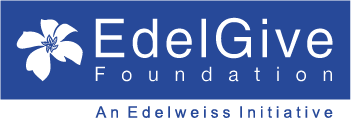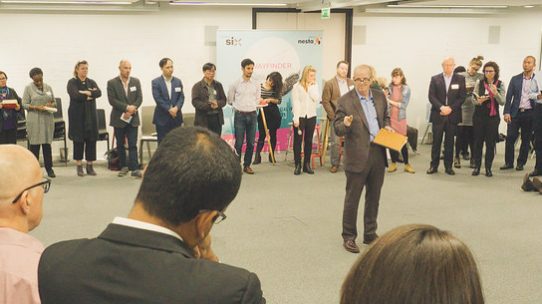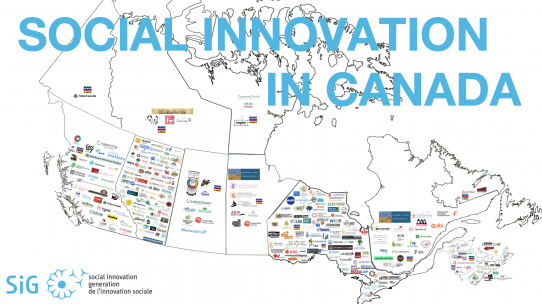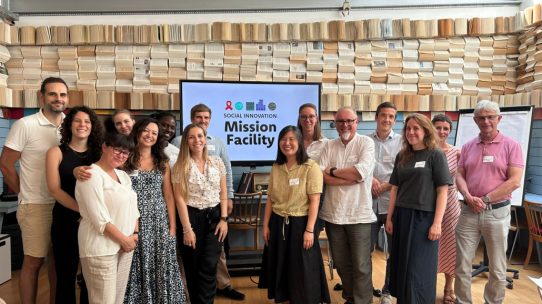TACSI’s reflections on 15 years of nurturing ideas, relationships and practices—locally and globally—through the SIX community.
SIX was founded just a year before TACSI, back in 2008—a time when big tech was still a symbol of progress, the White House had an Office of Social Innovation, and most meetings happened face-to-face.
At TACSI, we were established as an independent not-for-profit with seed funding from the South Australian Government. Our purpose was simple but ambitious: to find new ways to make progress on long-standing social challenges.
The SIX Singapore Summer School in 2011 gave us our first opportunity to share what we’d been quietly working on in South Australia with a global community of social innovators. In a raked lecture theatre—and, I suspect, with all the earnestness of first-year students—we shared early sketches of our Family by Family program: a peer-to-peer model where families help families. It was developed using what we called our ‘working backwards’ process—a co-design and innovation approach focused on starting with lived experience and building from there. At that stage, Family by Family was still a concept.
Over the past 15 years, SIX—and the relationships it helped foster—has kept TACSI connected to the world and in 2012, we overturned our offices to host the Summer School in Adelaide. These relationships have given us fresh ideas, different perspectives, and a kind of quiet validation that someone, somewhere else, was grappling with similar questions. Christian Bason featured Family by Family in his book, we’ve collaborated with Charlie Leadbeater to write about Love and Power, and since the pandemic, we’ve maintained a virtual learning exchange with Public Policy Lab in the US—swapping insights as our work continued to evolve.
Our understanding of how to do—and how to spread—social innovation has shifted significantly over that time. Back around the time of those early Summer Schools, TACSI’s work was mostly focused on developing new innovations: through a national Bold Ideas Better Lives challenge, and the Radical Redesign work that led to Family by Family and the “Great Living Six” ageing innovations we shared at our second Summer School. But soon after, our focus shifted to social innovation as a set of practices.
We put a great deal of effort into encouraging the take-up of Family by Family—the innovation we first showcased in Singapore. We built an evidence base, tried to negotiate licensing, and tried to support replication in other countries. And there were successes: it’s still running in South Australia having reached over 2,000 families, it operated for three years in NSW and for a year in the UK , delivered by Shared Lives Plus. But overall, we learned a hard truth: in Australia at least, social purpose organisations don’t have strong incentives—or much appetite—to adopt innovations developed elsewhere.

What does spread, however, are ideas and practices.
The approach we used to develop Family by Family has since helped seed 11 other peer-to-peer models in Australia, New Zealand, England and Wales, in settings including caring, paediatric palliative care, foster caring, gambling, mental health, teen pregnancy and family, domestic and sexual violence. Most of these conversations begin the same way: “We want a Family by Family for [insert issue or context here].” The original innovation played a critical role as a “charismatic demonstration”, but what people really needed wasn’t the service model itself—it was the social process that made it possible. Peer-to-peer not as a pre-designed program, but as a practice.
The ‘working backwards’ approach we first presented in Singapore has evolved too. We’ve now applied co-design practices in hundreds of projects with non-profits, governments, and philanthropies across Australia—developing services, policies, systems innovations, and strategies that are shaped by lived experience. In a full-circle moment, a recent co-design process developed a three-year plan to introduce peer-to-peer workforces into South Australia’s child protection system—partly inspired by our writing on the potential of scaling peer-to-peer practices.
Alongside co-design and peer-to-peer, we’ve developed, adopted or adapted at least five other social innovation practices. Some of these have come from formalising things we were already doing—for example, our allyship work with First Nations communities, guided by TACSI’s Aboriginal lead and Aunty-in-residence, Aunty Vickey Charles. Others have evolved over time—like the community-led innovation practices developed through the Our Town initiative, which we’re now packaging up for broader adoption.
We’ve also drawn on international practices when they’ve aligned with local needs. One example: we turned to the US-developed impact networks model when trying to connect end-of-life innovators across Australia—this became the Good Death Impact Network.
As SIX evolves, so too does TACSI. We’re leaning further into our ambition to bring social innovation into the Australian mainstream—as a set of practices, enabled by charismatic demonstrations. We’re partnering with organisations to help them learn social innovation, do social innovation, and create the conditions in which it can thrive.And we’re now intentionally developing new practices—like our work in the National Futures Initiative to support Australia in pursuing a more just future, one that fully acknowledges the complexities of colonisation. We’re drawing on global learning (including through many of the relationships we’ve built through SIX), and we’re working with leaders in the Indigenous knowledge movement—what we see as the most exciting development in Australian social innovation. Together, we’re exploring the potential of Indigenous ways of knowing to shape a fairer future for all Australians. It’s work we’re just starting to share publicly at tacsi.org.au/futures.






